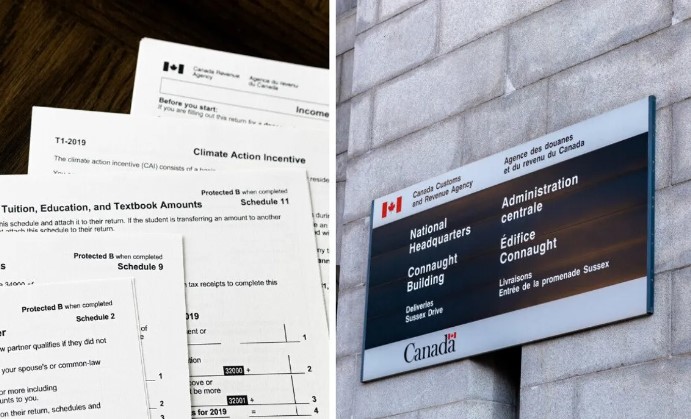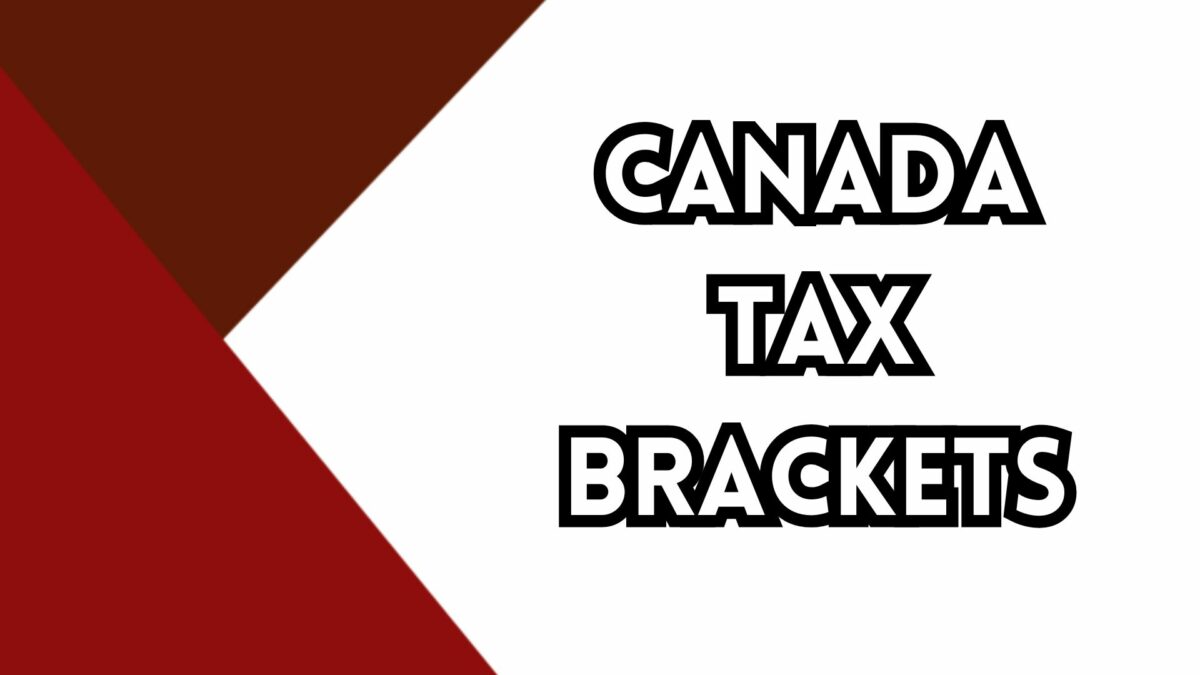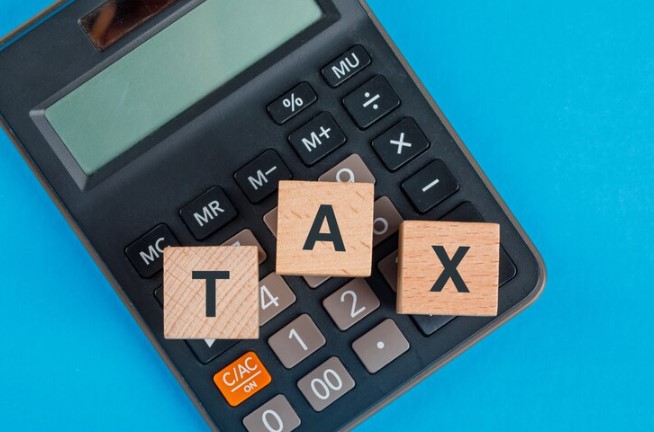Understanding Canada’s income tax system and Canada tax brackets can seem like a daunting task, but don’t worry, it’s not as complex as it might seem. The first step is identifying your tax bracket, which is determined by your annual income and the province you live in.
Canada’s income tax rates are divided into brackets, with those earning more falling into higher brackets and thus paying a higher tax rate. This is part of Canada’s graduated tax system, where higher income levels are taxed at progressively higher rates.
Your province of residence as of December 31 of the tax year also plays a role, as each province and territory has its income tax brackets and rates. Now, let’s delve deeper into how these tax brackets work and how they could impact your tax obligations.
What are Canada tax brackets?

To fully comprehend how taxes in Canada work, it’s critical to understand tax brackets. Tax brackets, often referred to as different levels, serve as the cornerstone of Canada’s income tax system. The tax bracket you’re part of corresponds directly to your earnings and province of residence.
Knowing which income tax bracket you fall into is vital to estimate your pending tax payments. Let’s simplify this concept with a practical example. Imagine you’re an employee who earned $60,000 per year in 2023. Out of this, the first $53,359 would’ve been taxed at 15%, resulting in a tax sum of $8,003.85. The balance would’ve been subject to a 20.5% tax rate, thereby accruing a tax of $1,361.41. So, this employee would’ve had to pay a total federal tax of $9,365.26 in 2023.
Alternatively, should the same employee make the same income in 2024, the initial $55,867 would be taxed at 15%, amounting to $8,380.05, with the residual being taxed at 20.5% translating to $847.26 in tax. Consequently, the employee’s total federal tax obligation for 2024 would amount to $9,227.31.
From a broader perspective, this disparity indicates that the higher tax bracket rate of 20.5% attracted less tax in the second example. In contrast, the first tax bracket rate of 15% applied to a more significant portion of the salary, thus leading to a higher tax amount.
In Canada, the federal tax brackets are indexed to inflation yearly, which is vital to remember, especially should your earnings fluctuate during any given year.
There are five federal tax brackets reflecting your income, and knowing which bracket you belong to is a fundamental part of understanding taxes in Canada. Refer to the current tax brackets in Canada to get a better understanding of where you stand. Your knowledge of Canada tax brackets is an essential tool in your tax planning arsenal.
How Do Tax Brackets Work?
Grasping Canada tax brackets is not as intricate as it appears. Here’s a clearer picture drawn from an example case. Say you are an employee of a company earning $60,000 per year. In 2023, your income tax allocation worked like this:
| Income Level | Tax Bracket | Amount Taxed |
|---|---|---|
| First $53,359 | 15% | $8,003.85 |
| Remaining $6,641 | 20.5% | $1,361.41 |
| Total Tax | – | $9,365.26 |
In 2024, the distribution goes as follows:
| Income Level | Tax Bracket | Amount Taxed |
|---|---|---|
| First $55,867 | 15% | $8,380.05 |
| Remaining $4,133 | 20.5% | $847.26 |
| Total Tax | – | $9,227.31 |
Looking at the two years, you’ll see a key fact. Canada income tax brackets lead to less tax under the second bracket at 20.5% and more under the first at 15%. This is because a higher amount of your income applies to the first bracket than the second.
Equipped with knowledge of Canada tax brackets, you’re empowered to estimate your tax payment based on your earnings and province of residence. As taxes in Canada are indexed to inflation, this adjusts every year, providing a dynamic perspective of your potential tax obligations.
Getting your 2023 income tax refund or figuring out the taxes you owe can be simplified with tools like an income tax calculator. Whether you opt to self-file, seek assistance, or delegate the task to an expert, staying tax-literate plays a pivotal role.
Having this awareness of income tax brackets in Canada ensures that you’re prepared for tax season. As you start filing your income taxes this year, consider these tax fundamentals as part of your strategic tax planning approach. Final thoughts to remember: Be tax-literate, understand your tax obligations, and stay ahead in your financial journey.
How tax brackets work in Canada
Navigating the world of taxes is essential for understanding your financial responsibilities, and it’s easier when you are aware of the system in place, such as tax brackets. Canada tax brackets play a crucial part in this.
Current Tax Brackets in Canada
Canada’s income tax system operates on a progressive structure. This means the more income you earn, the higher degree of taxation you owe. Each increasing level of income qualifies for an escalating tax bracket. Let’s take a detailed look at the tax brackets in Canada.
The following Canada income tax brackets from Statista apply for the year 2023:
| Tax Rate | Tax Brackets | Taxable Income |
|---|---|---|
| 15% | on the first | $53,359 |
| 20.5% | on the next | $53,359 up to $106,717 |
| 26% | on the next | $106,717 up to $165,430 |
| 29% | on the next | $165,430 up to $235,675 |
| 33% | on the portion over | $235,675 and up |
For instance, if your taxable income is below the $53,359 threshold, your federal marginal tax rate is 15%. Planned deductions and ensuing credits can impact the amount of income tax you pay.
It’s advantageous to employ an income tax calculator to prepare for the tax season. These useful tools can provide an estimate of your tax refund or the amount of tax owed. The knowledge of your taxable income also helps in understanding which federal or provincial brackets fit your current financial situation.
The Role of Province in Tax Brackets
Don’t overlook the importance of location when dealing with taxes in Canada. The overall tax rates, provincial plus federal, may differ. If you are residing in Ontario but your friend lives in British Columbia, and you both make the same amount of money, your overall tax rates may greatly vary.
How to determine your tax bracket
To identify your income tax bracket in Canada, you’ll first need to evaluate your taxable income. You can find this figure on Line 15000 of your tax return. If your taxable income increases, chances are your income tax will increase as well since higher levels of income are taxed at higher rates. Understanding your tax bracket is crucial as it’s the foundation for calculating your financial obligations to the Canada Revenue Agency (CRA).
The Canadian income tax system uses a progressive or graduated structure, which means those who earn higher income fall into higher tax brackets and pay a higher rate. Each income level is met with a particular tax rate, and these divisions are what we refer to as tax brackets.
Bear in mind that the system is not designed to tax your entire income at the highest rate. If your taxable income is, for example, in the third tax bracket, you won’t pay the third bracket’s tax rate on all of it. Instead, you’d pay the first tax rate on the income within the first bracket’s bounds, the second tax rate on the income within the second bracket’s boundaries, and the third rate on the remainder.
It’s vital to highlight that there are differences at the provincial level too. Apart from the five federal tax brackets, each province has its own set of income tax brackets and rates. These provincial rates hinge on where you reside as of December 31 of the tax year. So, while evaluating your tax obligations, consider including provincial differences in tax rates for a more accurate calculation.
For your convenience, consider using an income tax calculator to run the numbers. Tax calculators can offer a simplified estimate of your tax liabilities, allowing you to plan your finances better. Remember to stay updated on the latest changes in tax brackets, as the numbers typically change annually.
Aside from income tax, be aware of other obligations and deadlines, such as contributions to a registered retirement savings plan (RRSP), a Pooled Registered Pension Plan (PRPP), or a Saskatchewan Pension Plan (SPP). For instance, the deadline for contributions to these to offset against your 2022 income is March 1, 2023. Staying informed will guarantee that you meet all your tax obligations and deadlines promptly.
Why does your tax bracket matter?
When it comes to managing your finances and income tax obligations, knowing your tax bracket is crucial. In Canada, we use what’s called a progressive or graduated tax system. This means that the more money you make, the more you’ll owe and potentially pay per dollar earned. But don’t panic – this doesn’t mean your entire income is taxed at one high rate. Instead, the system uses brackets, and each bracket has a distinct tax rate.
Tax brackets in Canada are structured in increasingly higher levels of income. So, if your taxable income is less than the $53,359 threshold, your federal marginal tax rate is 15%. One thing to note: while we’ll be discussing federal tax rates, don’t forget that provincial tax rates also apply.
Here’s a quick rundown of Canadian income tax brackets:
| Tax Rate | Tax Bracket |
|---|---|
| 15% | on the first $53,359 |
| 20.5% | on the next $53,358 |
| 26% | on the next $58,713 |
| 29% | on the next $70,245 |
| 33% | on the portion over $235,675 |
It’s crucial to understand that tax rates apply to taxable income. This is your total income subtracted by any deductions you may be eligible for. Tools such as an income tax calculator can be a boon when working out your taxable income and determining your tax bracket.
As a rule of the thumb, stay informed about changes in tax brackets to ensure you’re planning your finances accordingly. Keeping up-to-date with this information will help you manage tax contributions and deadlines smoothly and efficiently. Lastly, remember that everyone has a role in the country’s tax structure – your financial contribution supports Canada’s resources and services.
Income Tax Calculator
Understanding your financial obligations can ensure you’re prepared to meet them head on. If you’re curious about forecasting your income tax for 2023, an Income Tax Calculator is an invaluable tool. It provides quick, accurate estimates of tax refunds or amounts owed.
For those navigating taxes in Canada, this can be particularly powerful. It’s a cumbersome process to divide your income into portions applicable to different tax brackets. This is especially true when you consider the tax brackets in Canada are progressive. Tools like an income tax calculator streamline this process, offering insights tailored to your specific financial situation.
Suppose you have a taxable income of $150,000 for the year 2023. As you run the numbers, you find your total tax amount is $23,695.82. Your marginal tax rate, or the rate applied to your highest level of income, is 26%. However, your effective tax rate, which assesses the average amount of taxes you’ll pay, is 15.80%. That’s $23,695.82 divided by $150,000. These rates give you a clearer picture of your actual tax obligations.
With access to an income tax calculator, these kinds of calculations become simple and straightforward. Not only does this save you time, but it can also provide a better understanding of how deductions impact your taxable income. Additionally, it provides a glimpse into potential tax refunds or liabilities, equipping you for more effective financial planning.
Remember, the tax brackets in Canada are subject to change. Staying updated with these shifts ensures that you’re not caught off guard when tax season rolls around. Using resources that keep you informed, like an income tax calculator, is not just smart – it’s strategic. It’s all about effectively managing your tax obligations.
Federal Income Tax Rates for 2024 Tax Year (Due in 2025)
Certainly, grasping the concept of tax brackets in Canada is critical for efficient financial planning. Each year, the federal and provincial governments establish income ranges and tax rates for these ranges, the income tax brackets. Essentially, your income is divided across these tax brackets and taxed at increasing rates as your income grows. This is the heart of Canada’s progressive tax system.
Bear in mind, deadlines play a key role in managing tax obligations without penalties. For example, the deadline to file your 2023 income tax return in 2024 is midnight, April 30. However, if you’re self-employed, your tax return is due on June 17, 2024, since June 15 falls on a Saturday. Understanding these dates is essential to avoid late penalties.
T4 slips provide valuable information about the income tax deducted from your paycheck, detailed in Box 22. If you’re not sure what this is, take some time to learn more about income tax withholding.
Let’s talk refunds. Ever ask yourself when you can expect them? If you’re transmitting your return via NETFILE, it usually takes 2 to 3 weeks to receive a refund. For mailed returns, expect them in the mail 4 to 6 weeks after the CRA or Revenue Quebec receives your return.
Savvy taxpayers use tools like an income tax calculator to anticipate their tax obligations. These calculators factor in the progressive nature of Canada’s tax system and provide insights into both your marginal and effective tax rates. Using one could make your tax preparation a breeze.
Understanding taxes in Canada is not a luxury, it’s a necessity. Stay informed and use that knowledge to take command of your financial health. Take note of changes in the Canada tax brackets and use it to your advantage. You’ll be amazed at how a clear understanding of your tax responsibilities can lead to successful financial planning.
Conclusion
Canada’s tax brackets can significantly enhance your financial planning. Remember, these brackets are updated annually by the federal and provincial governments. So, it’s essential to stay updated to manage your tax obligations effectively and avoid penalties. Your T4 slips and tools like income tax calculators are your best allies in this process. They’ll help you anticipate refunds and direct your way through marginal and effective tax rates. By staying informed and proactive, you’ll be able to leverage this knowledge for successful financial planning. Never overlook the influence of a well-thought-out tax plan. It’s not just about meeting obligations, it’s about optimizing your financial future.
Frequently Asked Questions
Q1. Do Canadians pay more taxes than the USA?
Yes, generally, taxes are higher in Canada than in the USA. Canada’s personal income tax rate is 33%, and the United States’ is 37%. However, these figures apply to the higher income tax brackets.
Q2. What are the tax brackets in Canada compared to the US?
The federal individual income tax rates in Canada are between 15% and 33%, while in the United States, they range from 10% to 37%. In 2023, the lowest individual tax bracket in Canada is $53,359, whereas it’s $11,000 in the US. Furthermore, all provinces in Canada have a provincial income tax, but eight states in the US do not have a state income tax.
Q3. How much would I take home if I had a $100,000 salary in Ontario?
If you have a $100,000 minimum wage in Ontario, your after-tax income per year would be approximately $73,571, or $6,131 per month. This amount is your take-home pay, which you can use for expenses like housing, transportation, and entertainment.
Q4. Do expatriates have to pay taxes in Canada?
Yes, even if you’re a non-resident under Canadian tax rules, you’ll have to pay Canadian taxes if you have Canadian-sourced income. This rule applies even if you live in a country that doesn’t collect taxes.
Q5. Which country has the highest tax rate?
The country with the highest income tax rate in the world is the Ivory Coast in West Africa. Despite the lower quality of life compared to other countries, residents are required to pay a large portion of their income to the government in tax.






